Food
Wonder Bread
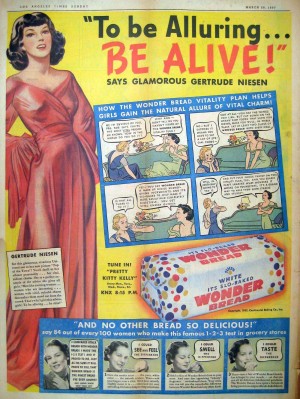
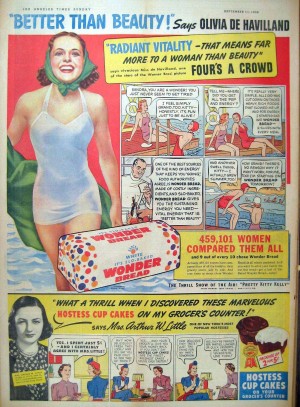
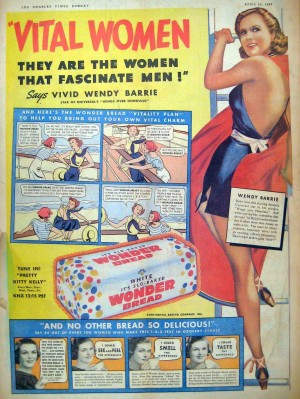

So far as I know, Wonder Bread has not yet returned to the shelves, although the rights to make it have been purchased. One can only hope that the new company revives this old ad campaign.
[Click all images to enlarge]
Ad source.
Posted By: Paul - Thu Aug 01, 2013 -
Comments (10)
Category: Business, Advertising, Products, Food, Sex Symbols, 1940s
The effect of diet on the face
It has been shown, and seemingly conclusively, that a flesh or greatly mixed diet promotes angularity in the face generally, while the nourishment obtained from a single article, commonly of a starchy nature, coarsens the features. Thus we have the potato lip, the oatmeal lip, the maize lip."
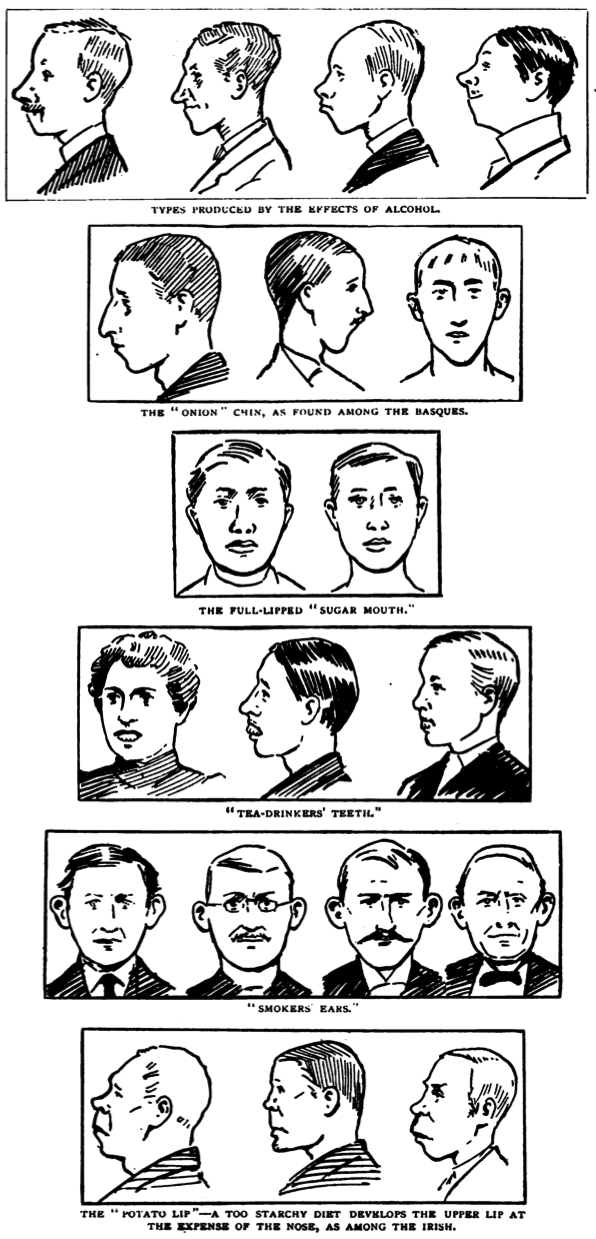
From Fauconberg, W. (1905). "The effect of diet and climate on the face." The Strand Magazine: 418-423.
Posted By: Alex - Mon Jul 29, 2013 -
Comments (4)
Category: Body, Food, Science, 1900s
Dieting advice from 1945
I wonder how the phrase 'fatty foolish' would go over in a weight watchers meeting nowadays.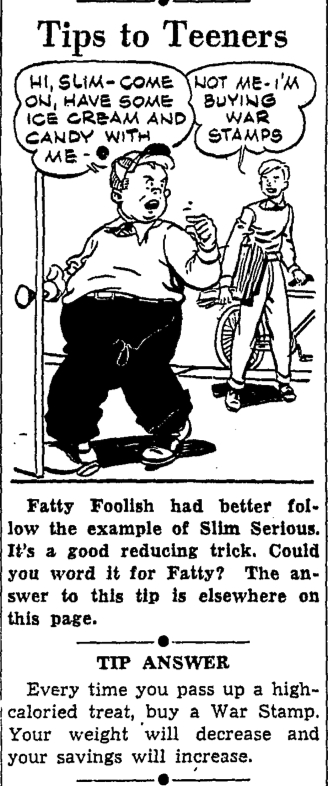
Posted By: Alex - Fri Jul 26, 2013 -
Comments (5)
Category: Food, 1940s
Immortal Potato
Food preservation news from 1954. I wonder if Dr. Butts' potato is still sitting unchanged on a shelf in some government warehouse. Spokane Daily Chronicle - Apr 2, 1954]
Posted By: Alex - Tue Jul 02, 2013 -
Comments (9)
Category: Food, Vegetables, Atomic Power and Other Nuclear Matters, 1950s
Pizza Button Solves Hunger
Using Bluetooth technology and past ordering history, The Red Tomato Pizzeria in Dubai gives customers the opportunity to order pizza by pushing the emergency pizza button.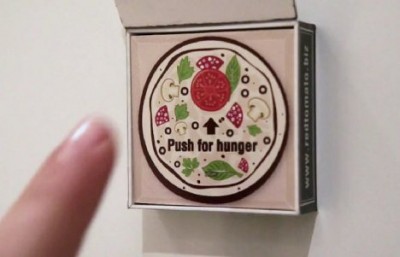
Here's a film preview-type commercial for the service.
I'm ready for this to roll-out worldwide.
What push-button technology do you predict will be available next?
Posted By: gdanea - Mon Jul 01, 2013 -
Comments (1)
Category: Food
Mayonnaise Flow Rate
As you eat your sandwich, you probably never realized all the science that went into it. Because, of course, some researcher had to study exactly how the mayonnaise flows off your knife onto the bread. [wiley.com]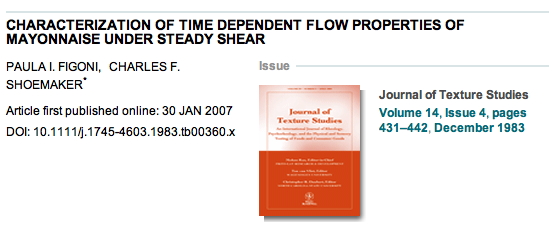
Posted By: Alex - Sun Jun 30, 2013 -
Comments (2)
Category: Food, Mayonnaise, Science
New Zealand Deer Cheese
New Zealand entrepreneur Graeme Shaw is starting the world's first commercial deer cheese operation. Milking the deer is apparently a bit of a challenge, but the cheese itself is said to taste good. I'd definitely give it a try. tvnz.co.nz
Posted By: Alex - Fri Jun 21, 2013 -
Comments (12)
Category: Food
Inhale Your Food
Any food that you can turn into a soup, you can inhale using "Le Whaf." It makes the experience of eating strongly resemble taking drags on cigarettes.
Posted By: Alex - Wed Jun 19, 2013 -
Comments (6)
Category: Food
Eating Wood—the latest advance
I've posted before about the centuries-old scientific dream of using sawdust to feed the world. So the latest effort in this vein caught my eye. A Virginia Tech researcher has figured out a way to enzymatically transform indigestible cellulose into edible starch. The science seems sound. The only problem is that the process is too expensive for commercial production. But it's a start!The article points out that most of us are eating wood (or cellulose) already. It's a common additive in the fast-food industry. But it's indigestible, so people couldn't survive on it. Its purpose is to add texture, or "mouth feel."
opb.org
In a study published this spring with colleagues in the Proceedings of the National Academy of Sciences, Zhang explains a process he developed to transform solid cellulose — which could come from wood, grass or crop residue (like corn husks) — into a carbohydrate called amylose. The process is a form of synthetic biology and relies on enzymes to break down the cellulose into smaller units and then restitch the molecules into starch. That means the final, edible food product — a powder that Zhang says tastes sweet — is completely synthetic but resembles other complex carbohydrates like corn starch.
Posted By: Alex - Thu Jun 06, 2013 -
Comments (6)
Category: Food, Science
Life in America: 1961
A semi-random slice across the weirdness of history. The first of an occasional series.
Posted By: Paul - Mon Jun 03, 2013 -
Comments (4)
Category: Customs, Food, Sports, Advertising, 1960s

| Who We Are |
|---|
| Alex Boese Alex is the creator and curator of the Museum of Hoaxes. He's also the author of various weird, non-fiction, science-themed books such as Elephants on Acid and Psychedelic Apes. Paul Di Filippo Paul has been paid to put weird ideas into fictional form for over thirty years, in his career as a noted science fiction writer. He has recently begun blogging on many curious topics with three fellow writers at The Inferior 4+1. Contact Us |




